



UK Issues - Problems
economic and political terms, so James argued the
benefits of union when he presented his proposals to
parliament in London. His arguments fell on deaf ears.
He then switched to an emotional argument, saying to
the London MPs:
It began with King James
For centuries, the monarchs of Scotland and England were in dispute over where the border between England and Scotland should be. At times there was even strife over who had the right to hold the crown and whether the king of Scotland should be a vassal to the king of England. In 1603 James VI of Scotland thought he could end it all, and enrich himself, no doubt, by exercising his right to the throne of England as well as Scotland. Although his accession to the English throne combined the two crowns in one person, the countries remained separate with separate governments. He made it a personal mission to unite the two countries politically as well. Just as today’s politicians argue the benefits of union in
“You are to be the husband, they the wife.
You the conquerors, they the conquered,
though not by the sword but by the sweet and
sure bond.”
James still failed to persuade parliament to pass the
union into law but, in my view, his argument established
the perception of the union as a one-sided marriage, in
the style of 17th century marriages, that persists to this
day.
Symbols that offend
The current form of the English Empire is the culmination of centuries of effort by the English aristocracy (i.e. the Normans) to establish domination over the whole of the British Isles. Edward I (”Hammer of the Scots”) would look upon our present structure with some satisfaction. The irony is that the job was completed by a Scottish dynasty, albeit one descended from Norman/Breton conquerors! You have only to look at our “British” flag and “British” anthem to see the Englishness of those symbols. The cross of St George sits arrogantly on top of the flags of two of the other nations in the union (Wales is not even worthy of a mention, it seems)! The anthem contains sentiments which would provoke the most phlegmatic Scot into rebellion against the Union.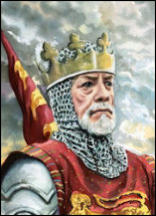
The ultimate insult
Terminology can also be offensive. The term “England” “is often used instead of “Great Britain” or “UK” by English people. Foreigners are often confused over what they should call us just as we are unsure of whether Holland or Netherlands is the correct term for our Dutch neighbours. This habit of referring to something by using the name of just part of it, is called pars pro toto. Wikipedia refers to pars pro toto as follows: “Pars pro toto ... can be imprecise, controversial or even offensive.” Mouse-over the images of Queen Victoria and William Pitt to see examples of “pars pro toto” in use in high profile situations.
Citizenship Review
In 2007, as part of the citizenship review by Lord Goldsmith, the government announced that it was looking into the possibility of redesigning the union flag and overhauling the national anthem. Presumably, the idea was to make clearer what it was that immigrants would be signing up to when becoming British citizens. Although nothing came of these proposals, the idea did at least acknowledge the fact that symbols are important in influencing how the nation is perceived!
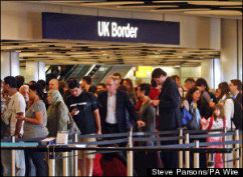
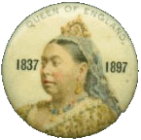
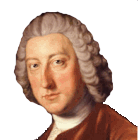
© Walter Jardine 2016


UK/EU





when he presented his proposals to parliament in London. His
arguments fell on deaf ears.
He then switched to an emotional argument, saying to the London
MPs:
It began with King James
For centuries, the monarchs of Scotland and England were in dispute over where the border between England and Scotland should be. At times there was even strife over who had the right to hold the crown and whether the king of Scotland should be a vassal to the king of England. In 1603 James VI of Scotland thought he could end it all, and enrich himself, no doubt, by exercising his right to the throne of England as well as Scotland. Although his accession to the English throne combined the two crowns in one person, the countries remained separate with separate governments. He made it a personal mission to unite the two countries politically as well. Just as today’s politicians argue the benefits of union in benefits of economic and political terms, so James argued the benefits of union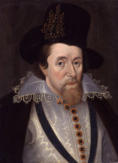
“You are to be the husband, they the wife.
You the conquerors, they the conquered,
though not by the sword but by the sweet and
sure bond.”
James still failed to persuade parliament to pass the union into law but,
in my view, his argument established the perception of the union as a
one-sided marriage, in the style of 17th century marriages, that
persists to this day.
Symbols that offend
The current form of the English Empire is the culmination of centuries of effort by the English aristocracy (i.e. the Normans) to establish domination over the whole of the British Isles. Edward I (”Hammer of the Scots”) would look upon our present structure with some satisfaction. The irony is that the job was completed by a Scottish dynasty, albeit one descended from Norman/Breton conquerors! You have only to look at our “British” flag and “British” anthem to see the Englishness of those symbols. The cross of St George sits arrogantly on top of the flags of two of the other nations in the union (Wales is not even worthy of a mention, it seems)! The anthem contains sentiments which would provoke the most phlegmatic Scot into rebellion against the Union.
The ultimate insult
Terminology can also be offensive. The term “England” “is often used instead of “Great Britain” or “UK” by English people. Foreigners are often confused over what they should call us just as we are unsure of whether Holland or Netherlands is the correct term for our Dutch neighbours. This habit of referring to something by using the name of just part of it, is called pars pro toto. Wikipedia refers to pars pro toto as follows: “Pars pro toto ... can be imprecise, controversial or even offensive.” Mouse-over the images of Queen Victoria and William Pitt to see examples of “pars pro toto” in use in high profile situations.
Citizenship Review
In 2007, as part of the citizenship review by Lord Goldsmith, the government announced that it was looking into the possibility of redesigning the union flag and overhauling the national anthem. Presumably, the idea was to make clearer what it was that immigrants would be signing up to when becoming British citizens. Although nothing came of these proposals, the idea did at least acknowledge the fact that symbols are important in influencing how the nation is perceived!
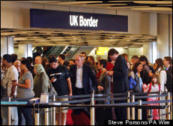
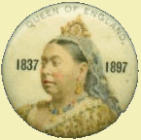
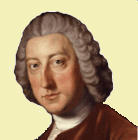
UK Problems


























